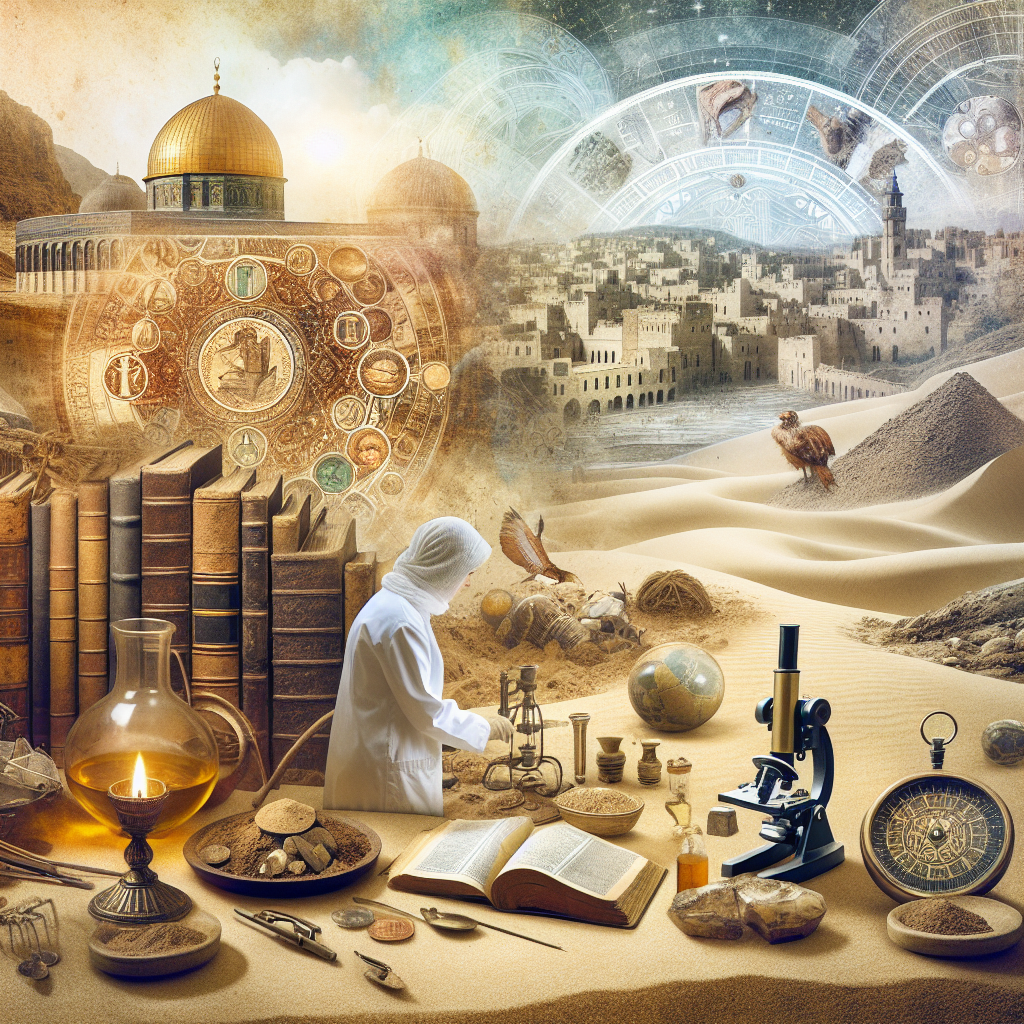Echoes of the Past: Bridging the Gap Between Biblical Narratives, Scientific Discovery, and Archaeological Evidence
The vast tapestry of human history is woven with numerous threads, each contributing to our understanding of the world and our place within it. Among these threads, biblical narratives have played a central role in shaping cultures, morals, and civilizations. Simultaneously, scientific discoveries and archaeological evidence have the power to illuminate, contextualize, and sometimes challenge these narratives. When we explore the intersection of these fields, we find a fascinating opportunity for education, reflection, and inspiration.
The Power of Biblical Narratives
The Bible, one of the most widely read and studied texts in history, is rich with compelling stories, teachings, and moral lessons. From the creation accounts in Genesis to the inspiring tales of perseverance in the face of adversity, biblical narratives foster a sense of hope and connection among people across generations. These stories provide spiritual guidance, cultural identity, and a sense of belonging to millions worldwide.
Moreover, biblical narratives often reflect universal themes, such as love, forgiveness, justice, and redemption. These themes resonate beyond religious boundaries, inviting people from diverse backgrounds to engage with the stories at a personal level. However, as cultures evolve and scientific understanding progresses, the need to reconcile ancient narratives with contemporary views becomes increasingly important.
The Role of Scientific Discovery
Science is a powerful tool that has advanced humanity’s understanding of the natural world and our historical existence. Through methodologies like carbon dating, DNA analysis, and geological surveying, scientists uncover new insights about the past, often reshaping our understanding of historical events and human interactions.
Recent scientific discoveries have shed light on significant biblical events. For example, studies of climate patterns in the ancient Near East provide context for narratives like the Great Flood. Similarly, breakthroughs in understanding ancient civilizations illuminate the societies in which biblical figures lived, allowing us to appreciate the fullness of their experiences.
These scientific explorations do not detract from the value of biblical narratives; instead, they encourage a deeper investigation into the historical and cultural backgrounds of these stories. They foster critical thinking and invite believers and researchers alike to engage with the texts in a meaningful way.
Uncovering Archaeological Evidence
Archaeology serves as a bridge connecting biblical accounts with tangible evidence of the past. Excavations in regions like Israel, Palestine, and Egypt have uncovered artifacts, architecture, and even inscriptions that resonate with the biblical narrative, providing a physical context for the stories told in sacred texts. The discovery of the Dead Sea Scrolls, for example, has offered unprecedented insight into the Jewish world of the Second Temple period, enriching our understanding of the New Testament.
Archaeological evidence can confirm the existence of historical figures, places, and events mentioned in the Bible, while also raising questions that warrant further exploration. Each artifact becomes a piece of a larger puzzle, inviting scholars and enthusiasts to collaborate in discovering the historical realities behind age-old narratives.
Bridging the Gap: An Encouraging Exploration
While the interplay between biblical narratives, science, and archaeology may sometimes appear contentious, it also has the potential to cultivate an enriched understanding of our shared history. By embracing a multidisciplinary approach, we can inspire open-minded discussions about faith and knowledge.
-
Dialogue between Disciplines: Engaging in thoughtful conversations between theologians, scientists, and historians can yield a collaborative spirit that fosters mutual respect. These dialogues can shed light on how narratives can evolve without losing their core message.
-
Educational Initiatives: Bringing education into this dialogue is crucial. Museums, universities, and religious institutions can collaborate to create programs that teach students about the scientific and archaeological methods used to explore biblical histories. Such initiatives will encourage curiosity and critical thinking while celebrating the wonders of discovery.
-
Personal Reflection: Encouraging individuals to reflect on their beliefs and how they intersect with historical findings can foster personal growth. This reflection, grounded in love and understanding, allows for a deeper appreciation of our past without diminishing one’s faith.
-
Celebrating Common Humanity: At the heart of this exploration lies a universal journey of humanity. Recognizing our shared narratives, whether they arise from sacred texts or scientific discovery, can foster empathy, compassion, and a shared commitment to understanding our world and each other.
Conclusion
As we embark on a journey through the echoes of the past, we find that biblical narratives, scientific discoveries, and archaeological evidence are not isolated realms but intertwining paths leading to greater understanding. By fostering dialogue, encouraging education, and inviting reflection, we can bridge the gap between these facets of human experience.
With an open heart and a curious mind, may we encourage each other to delve deeper into our histories, embracing the richness they offer and celebrating the beautiful complexity of our shared humanity. In this ever-evolving quest for knowledge, we will uncover not just the stories of the past but also the inspiration for our future.
Explore and dig up answers yourself with our BGodInspired Bible Tools! Be careful – each interaction is like a new treasure hunt… you can get lost for hours



